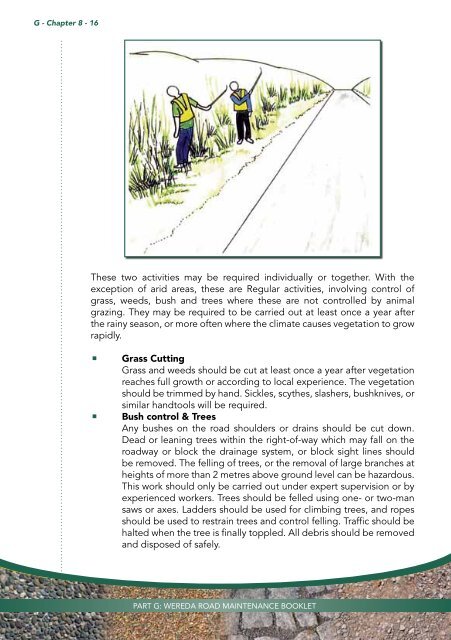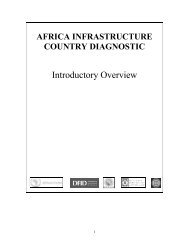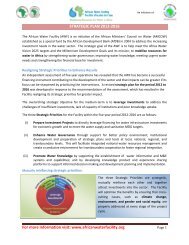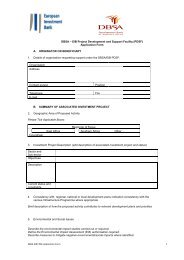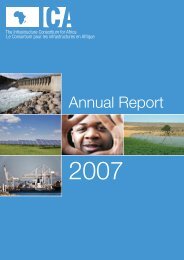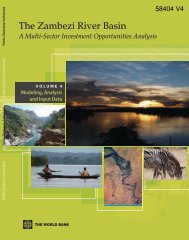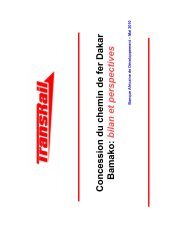Design-Manual-for-Low-Volume-Roads-Part-G
Design-Manual-for-Low-Volume-Roads-Part-G
Design-Manual-for-Low-Volume-Roads-Part-G
Create successful ePaper yourself
Turn your PDF publications into a flip-book with our unique Google optimized e-Paper software.
G - Chapter 8 - 16<br />
These two activities may be required individually or together. With the<br />
exception of arid areas, these are Regular activities, involving control of<br />
grass, weeds, bush and trees where these are not controlled by animal<br />
grazing. They may be required to be carried out at least once a year after<br />
the rainy season, or more often where the climate causes vegetation to grow<br />
rapidly.<br />
•¡<br />
Grass Cutting<br />
Grass and weeds should be cut at least once a year after vegetation<br />
reaches full growth or according to local experience. The vegetation<br />
should be trimmed by hand. Sickles, scythes, slashers, bushknives, or<br />
similar handtools will be required.<br />
•¡<br />
Bush control & Trees<br />
Any bushes on the road shoulders or drains should be cut down.<br />
Dead or leaning trees within the right-of-way which may fall on the<br />
roadway or block the drainage system, or block sight lines should<br />
be removed. The felling of trees, or the removal of large branches at<br />
heights of more than 2 metres above ground level can be hazardous.<br />
This work should only be carried out under expert supervision or by<br />
experienced workers. Trees should be felled using one- or two-man<br />
saws or axes. Ladders should be used <strong>for</strong> climbing trees, and ropes<br />
should be used to restrain trees and control felling. Traffic should be<br />
halted when the tree is finally toppled. All debris should be removed<br />
and disposed of safely.<br />
PART G: WEREDA ROAD MAINTENANCE BOOKLET


